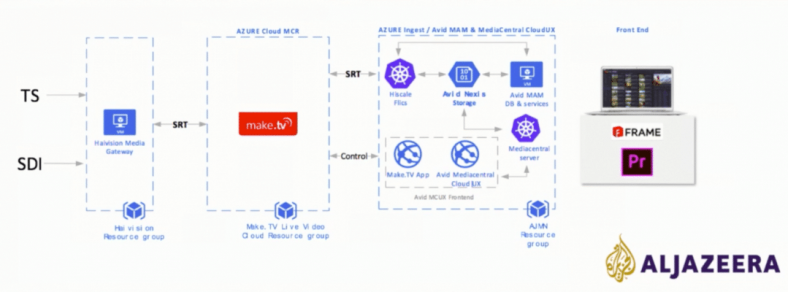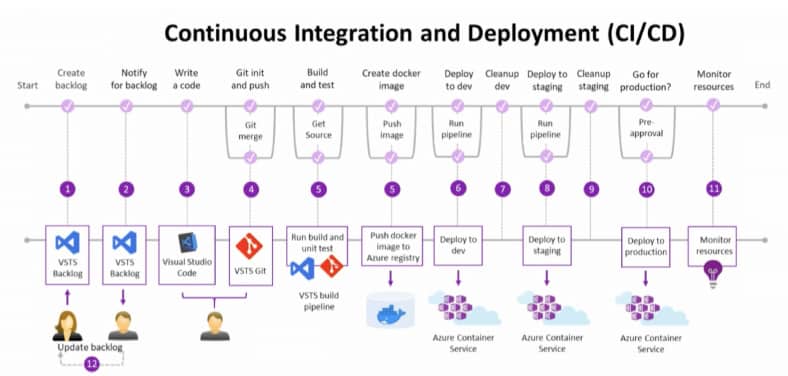This Open Source Video Streaming Protocol is Completely Disrupting the Broadcast News Industry
Everyone who works in the traditional broadcast industry knows that it is undergoing massive disruption. What we see, for the most part, are the external factors affecting broadcasters—things like streaming services and, especially in the sports broadcast sector, new sports that are gaining widespread appeal.
The fight for the best content is on—that is clear
What we have yet to see are the behind-the-scenes disruptions that are making broadcasters rethink how they are working with that content – the way they distribute it, how they produce it, and, moreover, where they produce it.
Behind much of this disruption is an open source video streaming protocol that is completely changing the landscape in video workflows.
At IBC 2018, video experts from Viacom, Haivision, Al Jazeera, Sky News, and MediaKind joined together to discuss the latest developments and use cases for the industry’s most rapidly adopted streaming video protocol – SRT.
Come take a look at a few of the things that they had to say.
Al Jazeera relies on SRT to outpace Twitter’s breaking news speed
For Miljenko Logozar, Director of Technology Solutions & Integrations from Al Jazeera, the prospect of gathering video from all over the world to be used in different newsrooms is a complicated one—especially when sending that video over the public internet.
In an effort to find a resolution to that problem, they have been working with Microsoft and Make.TV to put together a “Newsroom in the Cloud” solution. The most important part of this solution is that those video files move from their sources to the cloud with very low latency.
Below, you can see the workflow that Al Jazeera employs to deliver video from remote locations to newsrooms. Those of you working in broadcast will get the broad strokes from this image, but what we want to emphasize here is the use of SRT to transport that video over unreliable networks.

What Miljenko has found is that SRT is not just valuable for sending video over the public internet, but it’s also an important part of their cloud video distribution scheme. By using SRT inside the cloud, they’re able to leverage Microsoft’s Azure cloud infrastructure as the global contribution and distribution network.
According to him, open source tools and cloud video distribution are the two most important aspects of Al Jazeera’s workflows at this point. Because SRT is open source, Miljenko’s workflows can be easily changed within a day, providing a reassuring level of adaptability.
This adaptability means that Miljenko and his team no longer need to rely upon vendors to make those changes. They simply create their own schemes using open source code. Now, functions that used to take six months to a year to deploy can be done in a day. And if team members do not agree on the new workflow? They can always put together a brand new one the very next day.
This unprecedented flexibility is a massive advantage in a news cycle that relies on speed more than ever. An open source protocol means that Al Jazeera’s team has access to developers outside of their own organization who can help them with any SRT related issue, and that they themselves, can contribute in turn.
Perhaps most importantly, for Miljenko, is that with this kind of speed –with the ability to send video at such low latency – Al Jazeera is able now to compete against Twitter in terms of breaking news.
This is a remarkable step forward that helps Al Jazeera stay at the top of the broadcast news game.
Sky News creates new video contribution sources for only £35
For an organization like Sky News, video contribution and distribution from around the world is, quite obviously, a big part of what keeps them relevant and timely. Chris Smith is the person at Sky News in charge of these endeavors, and he is very serious about making sure that they are able to get video around the world to their bureaus as quickly as possible, without losing any of the quality along the way.
To say that Sky News is a major innovator in video transport using the public internet would be a bit of an understatement, given the remarkably clever means of delivering video over the internet that they have developed.
To send video over the internet, they are using software encoders, sending SRT feeds over the public internet, and, in some places, they’re decoding them on the other end with a £35.00 Raspberry Pi using VLC on the receiving end, as you see in the image below.
The end result for Sky News is that they’ve been able to deploy this solution to many places where, in the past, they’d have had to employ a commercial solution that would be cost prohibitive. Now, they’re able to send high-quality, low-latency secure streams over the public Internet with latency of less than one second.
SRT’s open source journey
The concept behind the Secure Reliable Transport (SRT) protocol, according to Haivision senior developer Marc Cymontkowski (who is largely responsible for the development of SRT) is simple. It is a streaming media protocol with a buffer at both the sender and receiver ends along with a retransmission in case packets are lost.
The most important part of the protocol is that it recreates the signal shape from the source at the receiver end, as you see in the image below.
This is incredibly important when there is a variable bit rate. The decoder will be expecting a signal shape exactly the same as what is being transmitted. The problem is that when you start using unreliable networks, you start to experience delay, packet loss and jitter. his leads to a signal shape that is different from the source, and the decoder then has a hard time recreating the video in its intended form, unless you introduce a buffer.
Because this is meant to be used in scenarios where a buffer is not desired, SRT introduces a small buffer, that recreates the signal shape so that you end up with a high-quality, low-latency feed.
Of course, this is a very simplistic overview of SRT. If you would like to dig in deeper, you can explore the code on GitHub – which a lot of people from the open source community have already done.
Since the launch of open source SRT, support for the protocol has been added to GStreamer, VLC, WireShark, FFmpeg, and Libav This support allows those who are new to the protocol the opportunity to try it with trusted and familiar tools.
Knowing this, developers from many different broadcast news organizations have started to test, work with, and further develop SRT for their workflows, with new members regularly joining the SRT Alliance, as Microsoft did recently.



























